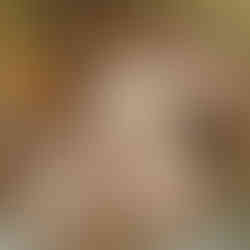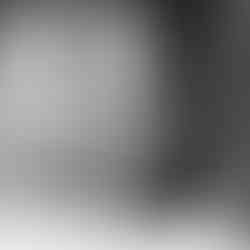Week 2: Truthfulness in Photography
- Lucie Nechanická
- Feb 6, 2021
- 7 min read
The topic of this week is questioning the truthfulness of a photograph. Since its invention, photography has been recognized for being an objective medium and faithful witness. It has been believed that photographs show us what we would have seen if we had been there ourselves. But is it really true?
Everybody experienced that moment of stumbling upon a place with beautiful scenery. Perhaps view point where you can see far away or a valley surrounded by massive cliffs, etc.
You decide to take a photo of it to remember how the place looks. But at the moment of reaching out for your phone or camera you begin to have a slight feeling of distrust in the accuracy of your apparatus. And of course you are right, the photograph ends up being flat, one dimensional and lacking the perspective of the real place. It does not matter what equipment you use and what wide-angle lens you have, the photograph will never look like the actual place when you had seen it.
John Szarkowski discussed in his book The Photographer’s eye, that when photography was a new medium people learned that it dealt with the actual. The public believed that a photograph could not lie.
It was easier for the photographer if he believed it too, or pretended to. Thus, he was likely to claim that what our eyes saw was an illusion, and what the camera saw was the truth.
- John Szarkowski, The Photographer’s Eye, 1966
Photography certainly does deal with the real but it does not mean that the depiction of the subject would be faithful or truthful to its subject.
Let’s discuss the question of truthfulness over this photograph. What can you see? Does the photo depict the subject realistically? Is this what the eye would see?

Lucie Nechanicka, 2016 A modern viewer would consider this is an artistic depiction of a human form. Informed viewer would know that the photographer used way too large aperture on a sunny day. They are both correct. But the point of this little exercise is that if you did not know this above information you might just think that the photograph depicts the subject how it really looked.
The pictures can be interpreted accurately only by people who have learned how to interpret them.
- Snyder and Allen, Photography, Vision and Representation
What is real about a photograph? For instance, if there was no subject there would be no photograph, unlike in painting where no real subject is needed in order to depict it. In photography, you cannot deny the thing was there, as Roland Barthes suggests in Camera Lucida.
But there are many technological choices you can make in order to capture one scene/subject. You can use small or large aperture to allow a different amount of light to enter the camera, you can use fast shutter speed to freeze the object in a motion, or slow shutter speed to make the moving object a blurry smudge or you can use a technique called panning and follow the moving object with a camera. You can also shoot from different vantage points, etc. In the end there would be many various depiction of one thing. Which one would be the truthful one? None? All? Maybe none and all at the same time?
These are three ways how to capture the moving object.
Slow shutter speed Panning Fast shutter speed
The camera records the object it sees through its mechanical nature, and the image which results is therefore not reality, but reality as seen through the camera.
- Matt Randle studies Philosophy at the University of Guelph, Canada
A photograph shows us "what we would have seen" at a certain moment in time, from a certain vantage point if we kept our head immobile and closed one eye and if we saw with the equivalent of a 150-mm or 24-mm lens and if we saw things in Agfacolor or in Tri-X developed in D-76 and printed on Kodabromide #3 paper.
- Snyder and Allen, Photography, Vision and Representation
Let’s discuss the truthfulness of photography once again and compare it to painting. As it has been said, photographs are more veracious than painting because they capture the real. It is well-known that the old masters who depicted female nude combined the most beautiful body parts from different subjects. Many paintings were accepted by the public and considered to be high art. When photography was invented and photographers started capturing female nude through the camera lens, the public was shocked by the results. Not because they have not seen female nude before but because these were portrayals of real women.
Renoir, Bather with Blonde Hair, circa 1903
Unknown, daguerreotype, circa 1850 There is a terrible truthfulness about photography. The ordinary academician gets hold of a pretty model, paints her as well as he can, calls her Juliet, and puts a nice verse from Shakespeare underneath, and the picture is admired beyond measure. The photographer finds the same girl, he dresses her up and photographs her, and calls her Juliet, but somehow it is no good – it is still Miss Wilkins, the model. It is too true to be Juliet.
- George Bernard Shaw, Wilson’s Photographic Magazine from John Szarkowski’s book The Photographer’s Eye, 1966
Now in digital age, the age of computer manipulation of images it is even harder to know whether the depicted subject is a truthful portrayal of the reality. The question is; does it matter? It depends. In photo journalism it is essential to stay away from manipulation because the photograph needs to inform what happened – that is its purpose. But in art it is based on what the artist is trying to convey.
I believe that in photography it is important what the photograph is about and not what the photograph is of. I have mentioned in one of my previous articles when I quoted John Szarkowski, that a photograph, incapable of narrative turns toward symbol.
If we have a look at Edward Weston’s photograph called Cabbage Leaf what we see is.. a cabbage leaf. However, the title here is necessary for us to recognize what it is because without it we could easily mistake it for a gathered cloth. The point is that if we were to imagine the look of a cabbage leaf in our head, Weston’s depiction of it probably would be quite unlikely to come across our mind (if we had never seen his photograph before).

Edward Weston, Cabbage Leaf, 1931
In Cindy Sherman’s work we see a lot of photographs of Cindy, yet they are not about Cindy. In her Untitled Film Stills Cindy Sherman is playing with the slipperiness of identity. She is capturing herself in her apartment but also outside in urban and rural landscapes. Sherman is situating herself into roles of leading heroines from movies looking captivated by something outside of the frame. This is what makes us wonder about the narrative – what happened before and what is going to happen after. Also there is something naggingly familiar about the photographs. We all have seen such movies with a stereotypical main character – ‘woman in danger’. The photographs imitate the cinematic qualities, such as angles, lighting and dramatization. However, they are not stills from real movies.
Cindy Sherman, Untitled Film Stills #21, 1978
Cindy Sherman, Untitled Film Stills #27, 1998
Cindy Sherman, Untitled Film Stills #54, 1980 Looking at these abstract and ambiguous photographs taken by Minor Martin White we become puzzled. What are they? In those less obscure ones we might be able to recognize the material such as wood, stone, snow or water. But in other photographs the identity of his subjects remains a mystery.
Now focusing on the third photograph called Poltergeist everyone understands this is not an actual photo of a ghost. Even a naïve viewer knows what really has been captured; snow and frost on a window which resemble a ghost-like figure. So what we really see is a photograph of snow. But what the photograph is about is neither snow, nor a cold winter day. The photograph is about our own imagination and how such imagination works when viewing images. It is our mind that makes us rather see poltergeist in that window before we notice it is snow and frost.
White once stated that: ‘One should not only photograph things for what they are but for what else they are.‘
Minor Martin White, Lobos Sandstone, Slit, and Shadow, 1949
Minor Martin White, Birdline + Surf, Point Lobos, California, 1951
Minor Martin White, Poltergeist, 1958
While rocks were photographed, the subject of the sequence is not rocks; while symbols seem to appear, they are barely pointers to significance. The meaning appears in the mood they raise in the beholder.
- Minor Martin White, in Fourth Sequence, 1950
What is important for me in my practice? What sort of truth can my photographs offer and what are they about? In my practice I mainly concentrate on self-portraiture, so in other words I am taking photographs of me. However, I do not think I have ever intended them to be about me. They are about conveying and responding to a feeling I had when pressing the shutter button. I shoot for several reasons and they all are personal. The decision of choosing myself as a subject is not narcissism, but rather a way of making peace with myself. The real truth my photographs can offer are those feelings. But can you read them?
My work is being a lot of the times read as the stereotypical female nude. Which is unfortunate as I have no intention to represent female nude as such and contribute towards male gaze. But because I happen to be a woman it is easy to misinterpret my work for that. There has been a long history of female nudes and the average viewer learned to read naked as nude. I am not capturing the female nude, I am capturing myself as a human being who is a woman. That is the truth.
References:
Figures Figure 1: https://photographycourse.net/tricks-and-tips-for-photographing-runners/
Figure 3: https://miottawacountyconnections.wordpress.com/2014/12/30/tips-for-taking-up-running-in-the-new-year/
Figure 7: https://artlead.net/content/journal/modern-classics-cindy-sherman-untitled-film-stills/
Figure 10: https://www.moma.org/collection/works/54714artist_id=6342&page=1&sov_referrer=artist
Figure 11: https://www.lempertz.com/en/catalogues/lot/872-1/265-minor-white.html
Figure 12: https://www.moma.org/collection/works/47171artist_id=6342&page=1&sov_referrer=artist
Text: John Szarkowski, The Photographer’s Eye, The Thing itself, p.3, 1966 Snyder and Allen, Photography, Vision and Representation, p.162, 1975 Roland Barthes, Camera Lucida, chapter 32, 1981
Matt Randle studies Philosophy at the University of Guelph, Canada
https://philosophynow.org/issues/80/Warning_The_Objects_in_the_Photograph_are_not_as_Real_as_they_Appear
George Bernard Shaw, Wilson’s Photographic Magazine from John Szarkowski’s book The Photographer’s Eye, 1966
Martin Minor White
https://en.wikipedia.org/wiki/Minor_White#cite_ref-Caponigro_41-0
Minor Martin White, in Fourth Sequence, 1950
https://en.wikipedia.org/wiki/Minor_White

























Thanks for your comment, Owen :)
It is interesting. I think a lot of the time a photo can capture how different people will view something based on many factors. Your running sports scene as a good example; if someone is close to the front or further back, or moving their head or concentrating depends on what they see. What's real and what's fantasy is definitely blurred at times with photography and art. Nice read.